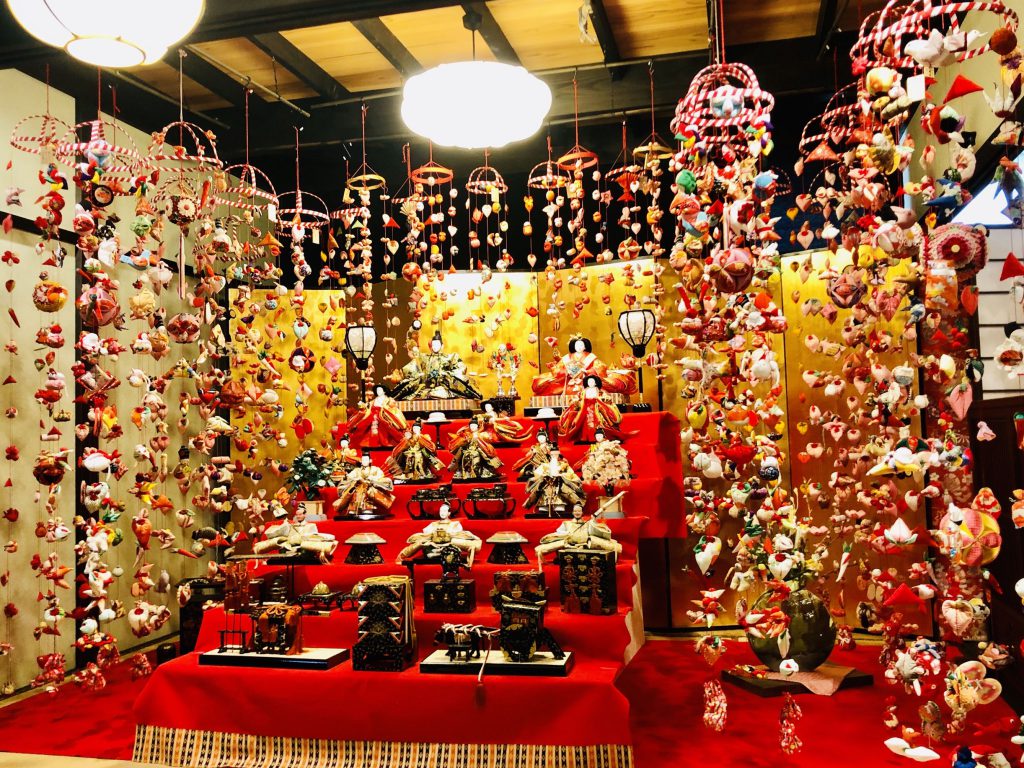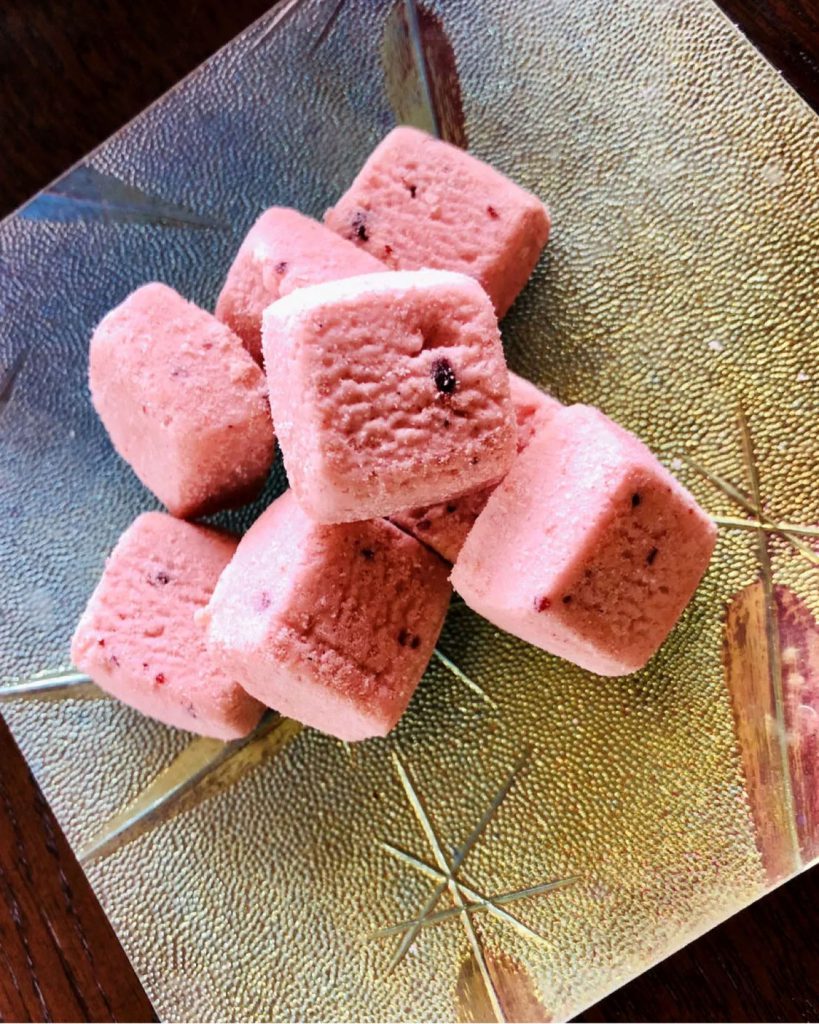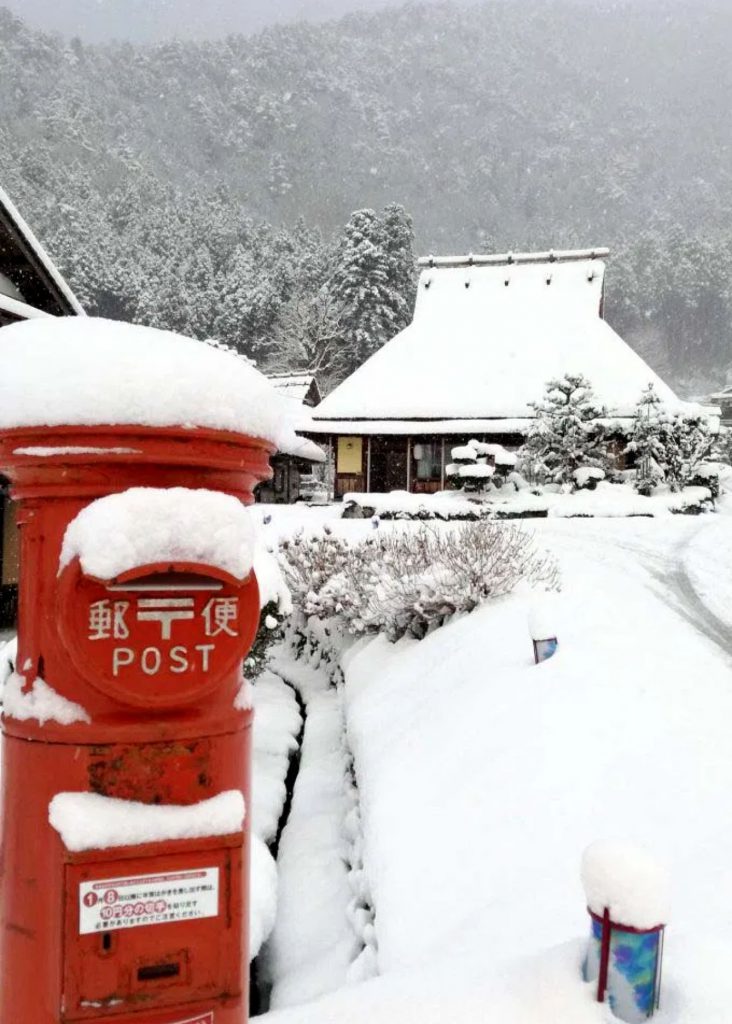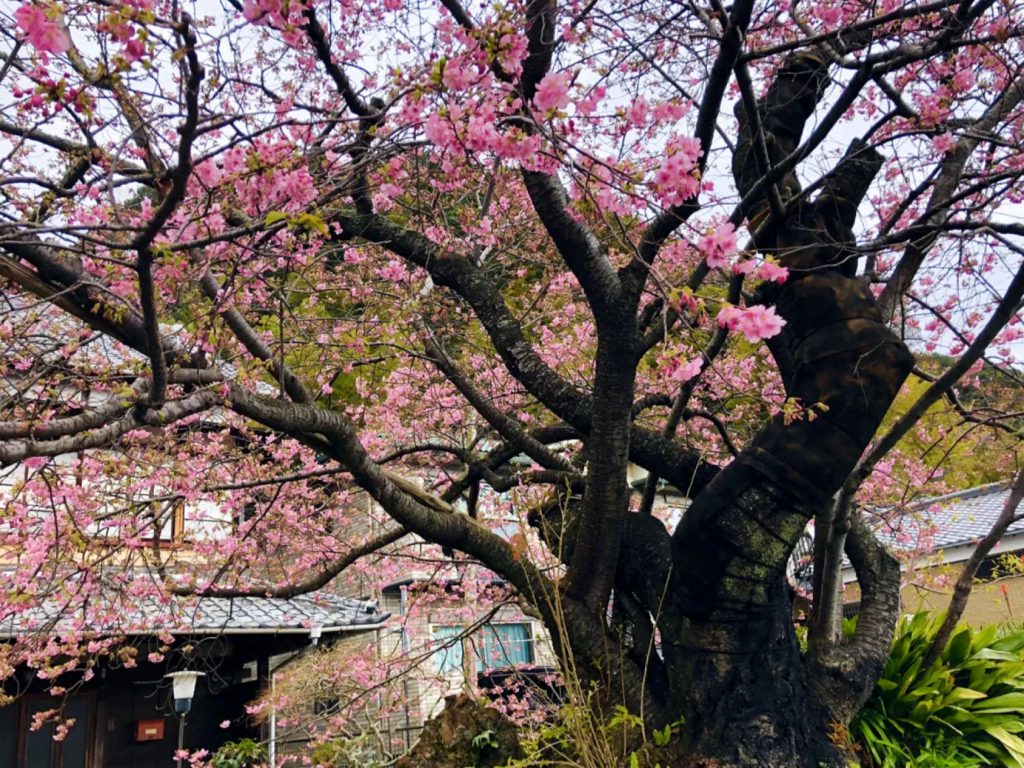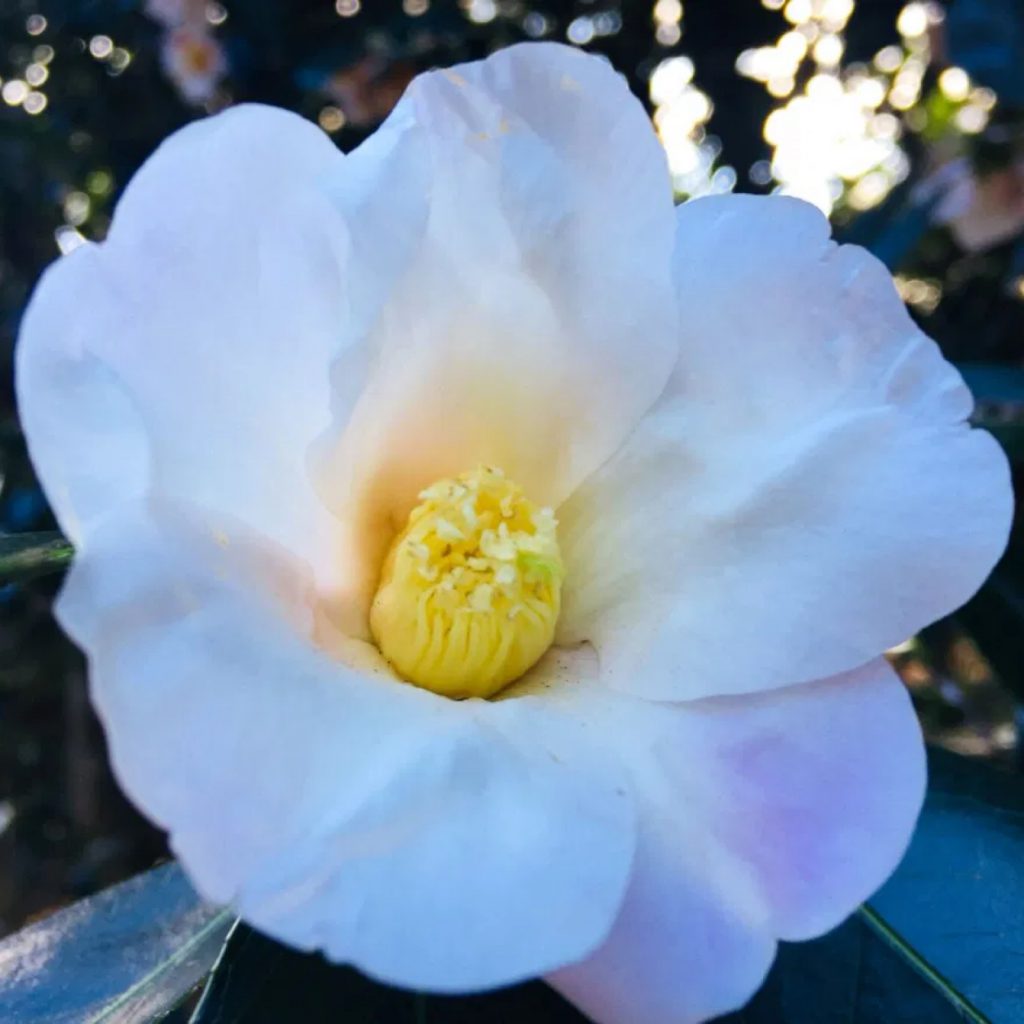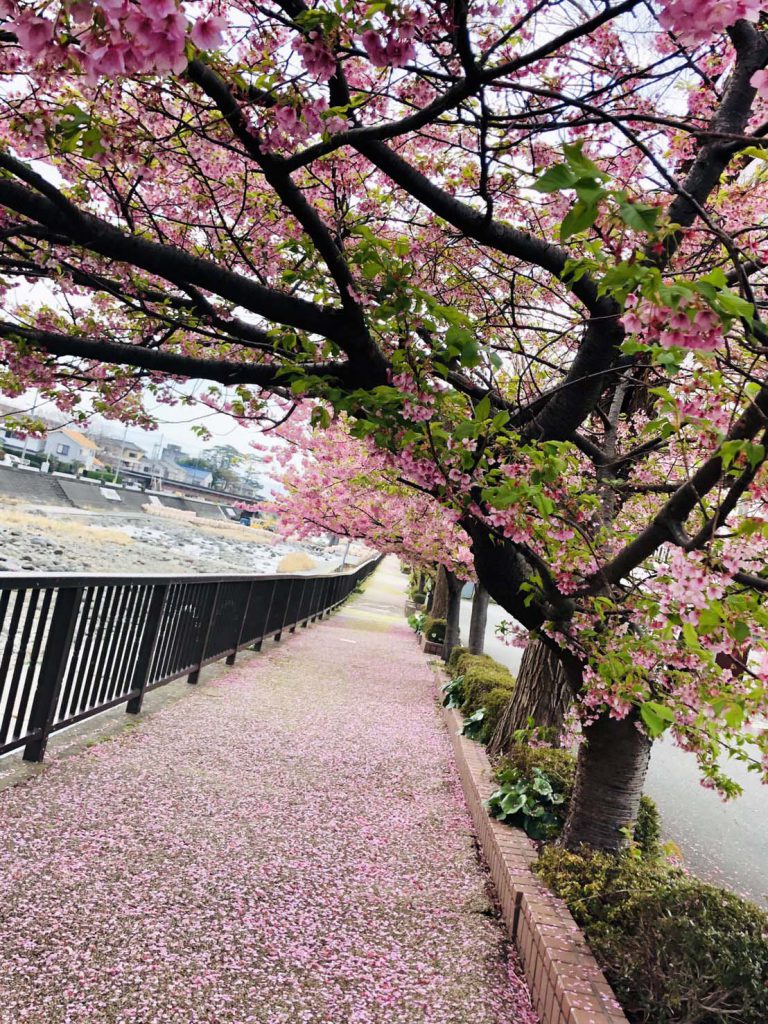
The early blooming Kawazu cherry blossoms fall in the wind of spring storm, and the petals are spread on the road in the early morning. Since ancient times, many Japanese have seen the spirit of Bushido in the cherry blossoms that bloom and fall. Bushido means the path that a samurai should take, but as Nitobe Inazo explained to Westerners, Bushido is the heart of the Japanese, and cherry blossoms are a symbol of it. The song by Norinaga Motoori, a national scholar from the Edo period, expresses exactly that, “My heart as a Japanese is the heart that impresses me with the beauty of the wild cherry blossoms that shine in the morning sun”. The rose flower, which Westerners like, hides the thorns under the sweetness, boasts gorgeous colors and rich scents, and exposes the corpse to the branches as if it were obsessed with life, while the cherry blossoms that Japanese people like do not hide their blades or poisons under their beauty, their colors are not gorgeous, their scents are pale, and they scatter cleanly, Nitobe also explained.
早咲きの河津桜は春蘭の風に舞い落ち、早朝の道に花びらを敷き詰めています。パッと咲いてパッと散る桜に古来多くの日本人は武士道の精神をみました。武士道とは武士の踏むべき道と言う意味ですが、新渡戸稲造が西洋人に説明したように、武士道とは日本人の心であり、桜はその象徴であると。江戸時代の国学者本居宣長の歌、「しきしまのやまとごころを人とはば朝日ににほう山ざくらばな」がまさしくそれを表しています。西洋人か好む薔薇の花は、甘美の下にとげを隠し、華やかな色彩と濃厚な香りを誇り、生に執着するがごとく、その屍を枝上にさらすのに対し、日本人の好む桜の花は、その美の下に刃も毒も隠さず、色は華美でなく、香りは淡く、そして潔く散る、とも新戸部は説明しました。

